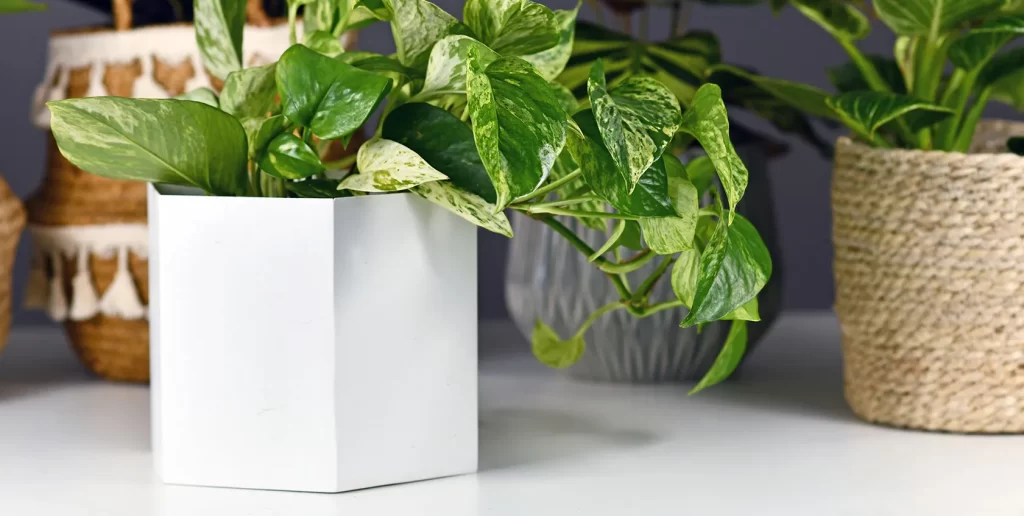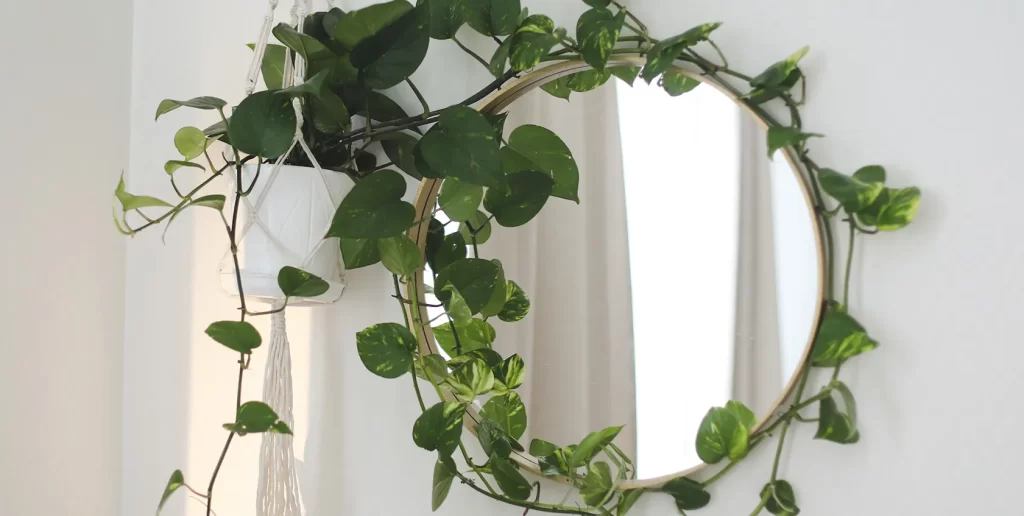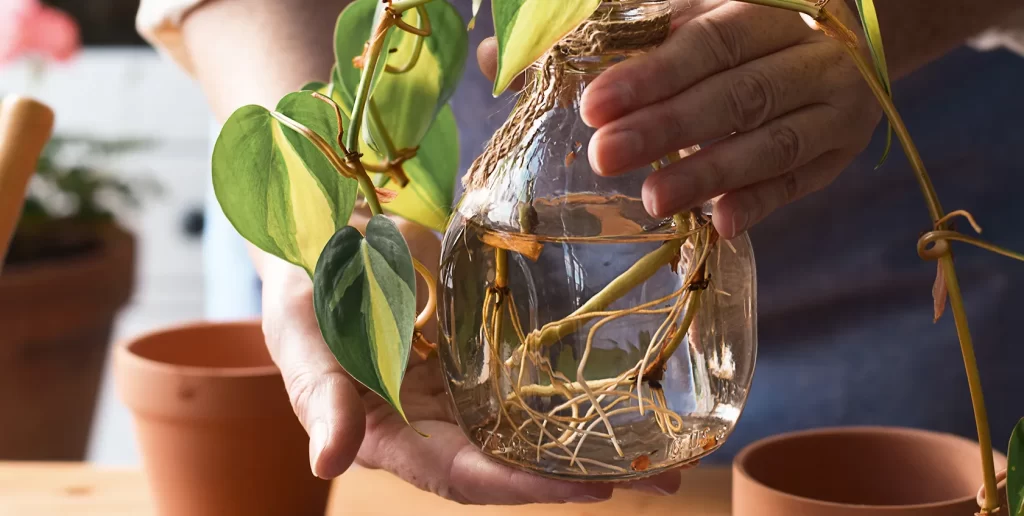When it comes to decorating our house, indoor plants are some of the first things that come to mind. Choosing them, identifying where they will go, and taking care of them is all about bringing life to our favorite corners. But not all of us are trained in plant care. The good news is that not all need the same care, and there are some beautiful options that require minimum maintenance. Such is the case with the Epipremnum aureum, scientific name of the pothos plant.
Pothos is a plant species that is part of the Araceae family, which contains more than 100 genera and thousands of species. It is native to Southeast Asia, particularly Malaysia, Indonesia, and New Guinea, but is found in many other parts of the world as a favorite for decorating home or office interiors.
This plant is both an indoor and outdoor plant. It is a climber and easy to care for. It grows fast, can add some life to your space, and it is an excellent option for air purification—although it can be toxic to pets!
We have prepared a care guide so that it can remain a spectacular addition to your home décor.
Watering
It does not need much water, and the key to knowing when to water it is in the soil itself. You should water it once a week, but check that the soil is dry before adding water. Otherwise, there is no need for more water. Humidity is important for this plant, so if your house is not humid enough, you can help it by spraying its leaves with water once a week as well.
Permeable soil
Pothos plants will do well with any potting soil mix, as they are very strong plants. However, for best results, the substrate it is in must be permeable and contain a good amount of organic matter and minerals, which are ideal for its growth. This permeability will also prevent its roots from drowning.
Your pothos will grow better in an environment with plenty of light—but without receiving direct sunlight. As long as you remember this, you can either have it inside in a well-lit place or outside with direct sunlight—it can burn if left in the sun for too long.
Dusting
It is common for pothos leaves to collect a lot of dust. Wipe each leaf down using a damp rag, but be careful not to tear them.

Beware of extreme temperatures
The pothos plant needs, among other care to grow in all its splendor, a temperature that is between 59 to 77 degrees Fahrenheit. Although it can also withstand cold temperatures of up to 41 degrees or heat close to 86, it will always be better to keep it in a more temperate environment so that its leaves maintain their vitality.
Fertilizing in the spring and summer
Use an organic fertilizer and apply it during the spring and summer, according to the instructions on the compost you buy. With this, their roots will be stronger because, although they need little maintenance and can be fine with basic care, the fertilizer stimulates their growth more.
Pruning for volume
If you would like a bushier look, you can prune it a little at the start of spring, when it is more active in its growth. That way, it will recover its vigor faster and grow beautifully. Check its stems and remove any that feel weak or have changed color. Those stems can be put in water to possibly sprout new roots.
Beware of pests and diseases
The cotton mealybug, red spider mites, and aphids are the pests that most affect this plant. No plant can be spared completely from insects (or other problems like rotting stems and roots due to excess water), but you can combat them by using an insecticide or fungicide with organic ingredients, so as not to damage it with chemical substances.
Yellow leaves?
Move your pothos to a place where it does not receive direct sunlight. Although it is normal for the leaves to turn yellow when they are about to fall, it can also mean that it is receiving too much sunlight and, in this case, you should move it to another place with enough light, though not direct. If you cannot move it, add a mesh screen over it for protection.

Support for strong growth
The pothos plant can reach over 6 feet in diameter, depending on the variety and the size. Its leaves may break if it becomes too heavy. Help your plant by adding wire or stick support to hold up its branches.
Repotting
When the roots begin to come out from under the pot, it is time to transfer it to a larger one, one that is at least 2 inches deeper than the previous. Carefully remove your plant from the pot, place it in the new one, and fill with more soil until it completely covers its roots. Do not press too hard and water it abundantly.

Grow it and reproduce it in water
Having a pothos in water is very simple and a great option to decorate your home. It can be placed in a bottle, vase, or any other glass container. Just cut a branch off your plant diagonally, a little above where a leaf sprouts. Put this branch in a glass container with enough water to submerge (about the height of 3 fingers). Little by little, its roots will grow and once they reach 4 inches, you can transfer it to a pot. Do not forget to change the water regularly, approximately every two or three weeks.
Another beautiful and low-maintenance indoor plant is the Ficus pandurata, which will be covered in a future blog post. If you want more variety, take a look at our five low-maintenance house plant options.





